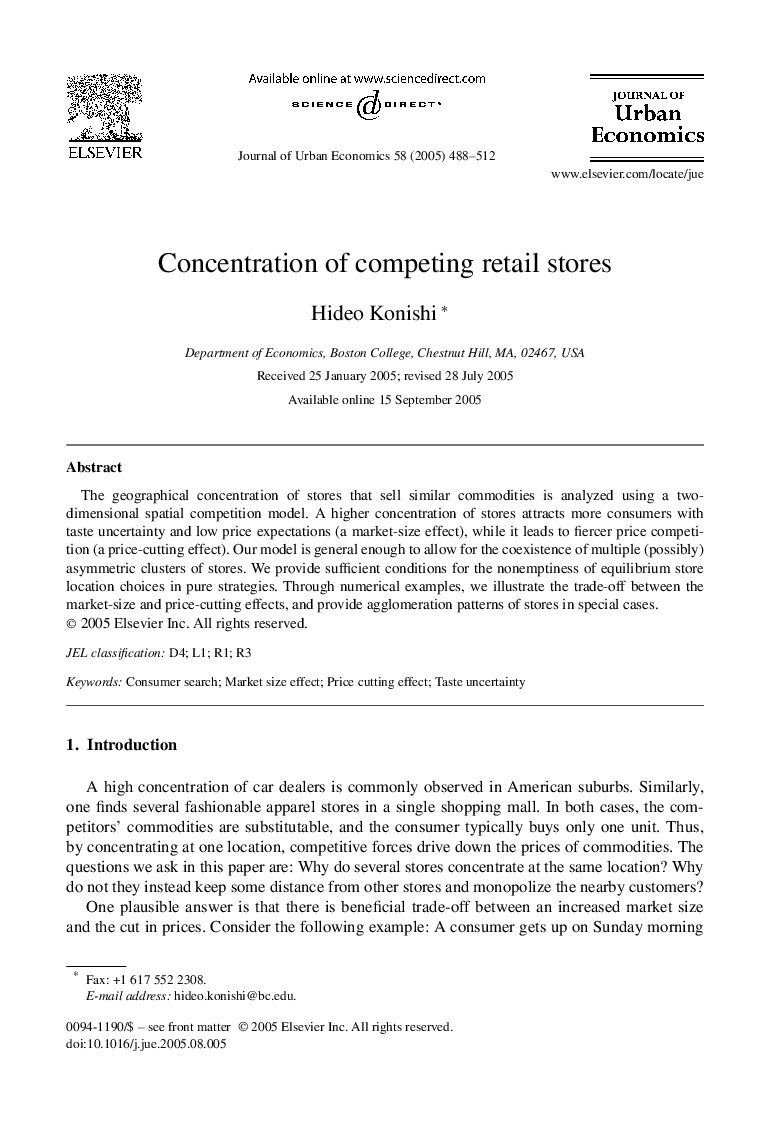| Article ID | Journal | Published Year | Pages | File Type |
|---|---|---|---|---|
| 10480013 | Journal of Urban Economics | 2005 | 25 Pages |
Abstract
The geographical concentration of stores that sell similar commodities is analyzed using a two-dimensional spatial competition model. A higher concentration of stores attracts more consumers with taste uncertainty and low price expectations (a market-size effect), while it leads to fiercer price competition (a price-cutting effect). Our model is general enough to allow for the coexistence of multiple (possibly) asymmetric clusters of stores. We provide sufficient conditions for the nonemptiness of equilibrium store location choices in pure strategies. Through numerical examples, we illustrate the trade-off between the market-size and price-cutting effects, and provide agglomeration patterns of stores in special cases.
Keywords
Related Topics
Social Sciences and Humanities
Economics, Econometrics and Finance
Economics and Econometrics
Authors
Hideo Konishi,
